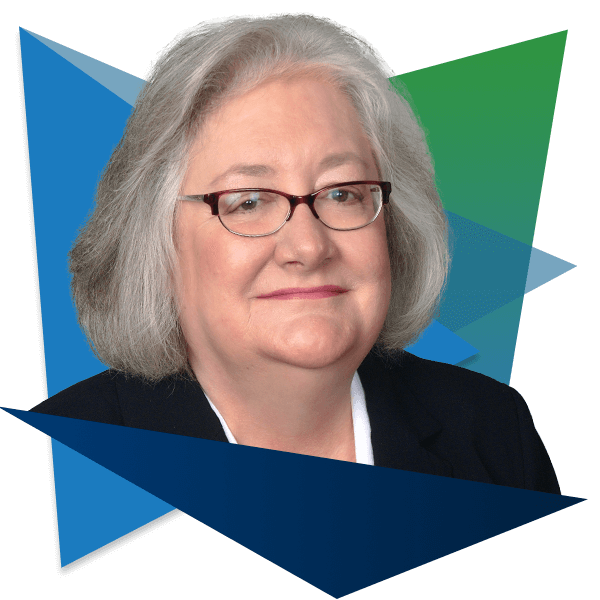

Plans We Support

Helping You Make the Right Choice
It’s not enough to simply know the ins-and-outs of all the different retirement plans available.
What really counts is knowing what plan will work for which client. Our experienced staff can help you navigate your choices.
After we understand the goals your retirement plan needs to meet, we’ll review the options, make a recommendation and make sure everyone at the table is in agreement.
Our team members value objectivity and transparency, which means they stay focused on you.

401(k) Plans
401(k) plans are the most common retirement plans in use today. Designed to serve for-profit businesses, they are often used to help attract and retain good employees. Each participating employee can elect to make pre-tax or Roth (post-tax) contributions through payroll deductions. And most employers, wanting to provide an added benefit and encourage employee participation, can match a predetermined amount of an employee’s contribution. While most 401(k) plans include both employee and the employer contributions, the employer is not required to make contributions. In a 401(k) plan, employers can make profit sharing contributions in addition to, or instead of, matching contributions.
401(k) Safe Harbor Plans
401(k) Safe Harbor plans are allowed to eliminate nondiscrimination testing by including specific, mandatory employer contributions to non-owners. This, in turn, enables all highly compensated employees – typically the business owners and senior management – to defer the maximum annual amount allowed regardless of the amount deferred by non-highly compensated employees. This plan is often used to help an employer reward and retain the employees it considers most valuable to the organization.
Roth 401(k) Plans
Roth 401(k) plans combine many of the benefits of a traditional 401(k) and a Roth IRA. For tax purposes, employees participating in this type of plan can choose to have a portion, or the full amount, of their retirement plan contribution treated in the same way as Roth IRA contributions. In a traditional 401(k), all contributions are considered by the IRS as pre-tax; distributions after retirement are subject to income tax. In a Roth 401(k), contributions are made after-tax. This increases the participant’s immediate tax burden, but the principal grows tax-free and distributions are tax-free if certain qualifications are met. Employers often can match some portion of the amount deferred by each employee, just as they can with a traditional 401(k).
Profit Sharing Plans
Profit Sharing plans offer flexibility, giving the employer the ability to decide the amount, if any, to contribute to the plan each year. For tax deduction reasons, a sponsor’s plan cannot exceed 25 percent of the total compensation of all eligible employees. In most cases, the contribution is determined based on compensation, meaning higher paid employees benefit more than others. If you’re looking to reward your most valued employees, a Profit Sharing plan may be an effective tool.
New Comparability Plans
New Comparability plans, also known as cross-tested plans, are a type of Profit Sharing plan. This option gives an employer the ability to offer certain employees a much higher contribution allocation than they could with a plan that requires standard nondiscrimination testing. New comparability plans are most often used by small businesses wanting to maximize contributions to owners and highly paid employees, while minimizing the contributions for other employees.
Age-Weighted Plans
Age-Weighted plans, another type of Profit Sharing plan, use an allocation formula that takes into account each employee’s age and compensation. In this plan, employees who are closer to retirement age may receive significantly larger contributions compared with employees who are younger.
Defined Benefit Plan
A Defined Benefit (DB) plan promises participants a specified monthly benefit, payable at the retirement age specified in the plan. DB plans are usually funded entirely by the employer, who is responsible for contributing enough funds to the plan each year to pay the promised future employee retirement benefits, regardless of company annual profits and earnings.
Employers who want to shelter more than the annual defined contribution limit may want to consider a DB plan because contributions can be substantially higher, resulting in faster accumulation of retirement funds.
DB plans use a formula to determine the fixed monthly retirement benefit for each employee. Benefits are usually based on an employees compensation and years of service, thus rewarding long(er)-term employees. Benefits may be integrated with Social Security, which reduces the plan’s benefit payments based upon the employee’s Social Security benefit. The maximum benefit allowable is 100% of compensation (based on the highest consecutive three-year average) to an indexed maximum annual benefit. A Defined Benefit plan may permit employees to elect to receive the benefit in a form other than monthly benefits, such as a lump sum payment.
An actuary determines annual employer contributions based on each employee’s projected retirement benefit and assumptions about investment performance, years until retirement, employee turnover and life expectancy at retirement. Employer contributions to fund the promised benefits are mandatory. Investment gains and losses cause future annual employer contributions to decrease or increase. Non-vested accrued benefits forfeited by terminating employees are used to reduce employer contributions.
Cash Balance Plan
A Cash Balance plan is a type of Defined Benefit plan that resembles a Defined Contribution plan. A traditional Defined Benefit plan promises a fixed monthly benefit at retirement that is usually based on compensation and years of service. In a Cash Balance plan, the employees benefit is expressed as a hypothetical account balance instead of a monthly benefit, making it look like a Defined Contribution plan.
Each employee’s account receives an annual contribution credit, usually a percentage of compensation, and an interest credit based on a guaranteed fixed rate or a recognized index, such as the 30-year U.S. Treasury bond rate, which could vary. This interest credit rate is specified in the plan document. At retirement, the employee’s benefit is equal to the hypothetical account balance, which represents the sum of all contributions and interest credits. Although the plan is required to offer the employee the option of using the account balance to purchase an annuity benefit, most employees roll the balance into an individual retirement account.
In a Cash Balance Plan, the employer bears the same investment risks and rewards that come with a traditional Defined Benefit plan. An actuary determines the contribution amount, which is the sum of contribution credits for all employees plus the amortization of the difference between the guaranteed interest credits and the actual investment earnings (or losses).
Employees appreciate this plan design because their accounts grow year-over-year; yet are protected against fluctuations in the market. In addition, a Cash Balance plan is more portable than a traditional Defined Benefit plan because most plans permit an employee to roll their cash balances into an IRA at termination or retirement.
403(b) Plans
403(b) plans are designed to serve nonprofit businesses in much the same way that 401(k) plans serve for-profit businesses. Many of our nonprofit clients find that a 403(b) plan helps them attract and retain good employees. As in a 401(k), each participating employee can elect to make pre-tax or Roth contributions through payroll deductions. And most employers, wanting to provide an added benefit and encourage employee participation, can match a predetermined amount of an employee’s contribution. While most 403(b) plans do include employee and the employer contributions, the employer is not required to make contributions.
Focused on You
If you’re looking for a team of experts to design a retirement plan, manage the details and understand your business, you’re looking for AimPoint Pension.

Let’s get aquainted.

















































